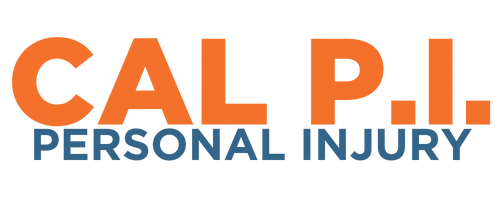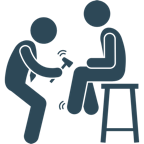

As a chiropractor in California, you are undoubtedly aware that personal injury cases can be a significant source of revenue for your practice. However, many chiropractors hesitate to accept personal injury liens due to the delayed payment process and the potential for dealing with disreputable attorneys. In this blog post, we will explore the benefits of liens for chiropractic personal injury cases and how they can improve your practice's bottom line while providing necessary care to your patients.
Personal injury cases generally offer higher compensation rates compared to other types of insurance claims. By accepting liens, your practice can benefit from a steady stream of income that can ultimately contribute to your overall profitability. Although payment might be delayed, the potential financial rewards can make it a worthwhile investment.
Understanding the revenue cycle of a personal injury case is essential for chiropractors who choose to work with patients on a lien basis. In this section, we'll break down the process using a hypothetical example, focusing on the financial aspects of a chiropractic case involving 24 visits.
Assumptions:
The patient, who has been injured in an accident, visits the chiropractor for an initial consultation. Upon agreeing to treat the patient on a lien basis, the chiropractor collects the necessary documentation and establishes a lien agreement with the patient's attorney. The chiropractor begins treatment with no upfront payment from the patient.
The patient continues to receive treatment over a period of 24 visits, which amounts to a total cost of $3,600 ($150 per visit x 24 visits). During this time, the chiropractor submits regular progress reports and billing statements to the patient's attorney.
After 12 months, the patient's personal injury case is settled, and the attorney receives the settlement funds. The attorney will then disburse the appropriate portion of the settlement to the chiropractor, based on the agreed-upon lien amount.
Upon receipt of the payment from the attorney, the chiropractor's lien is satisfied, and the revenue cycle is complete. In this example, the chiropractor receives $3,600 for their services, albeit with a delayed payment.
Although the payment may be delayed in a lien-based personal injury case, the potential revenue can still be substantial. In this example, the chiropractor's revenue from the personal injury case is $3,600, which can significantly contribute to the practice's overall financial health. However, it is essential to work
By offering chiropractic services on a lien basis, you can attract a broader range of clients who may not have access to immediate funds for their treatment. This can lead to an increased patient base and improved word-of-mouth referrals. As your reputation as a trusted chiropractic practitioner grows, you may find that more patients seek out your services for their personal injury needs.
It is important for chiropractors to consider the potential for expanding their patient base by focusing on personal injury cases, especially in municipal areas where car accidents are more common. Let's take a closer look at the numbers and make a case for chiropractors to engage more with personal injury cases.
Assumptions:
Based on the assumptions, we can estimate the number of car accidents in the municipal area as follows:
100,000 residents x 4 accidents per 1,000 residents = 400 accidents per year
To estimate the number of accidents per month, simply divide the annual number by 12:
400 accidents per year ÷ 12 months = approximately 33 accidents per month
With approximately 33 car accidents occurring each month in a municipal area of 100,000 people, there is a considerable number of potential personal injury clients. Many of these accident victims will require chiropractic care to address musculoskeletal injuries, such as whiplash, back pain, or joint discomfort.
Here are a few reasons why chiropractors should consider engaging more with personal injury cases:
By targeting personal injury clients, chiropractors in municipal areas can tap into an underserved market that offers significant potential for practice growth and financial success. By providing specialized care for accident victims, chiropractors can enhance their reputation, expand their patient base, and ultimately strengthen their practice.
Working with personal injury cases means that you will have the opportunity to collaborate with attorneys. By fostering professional relationships with reputable lawyers, you can benefit from their referrals and expertise. Over time, you may find that a strong network of legal professionals can help you navigate the personal injury landscape more effectively and efficiently.
Many personal injury victims require ongoing chiropractic care to fully recover from their injuries. By offering lien-based services, you can ensure that your patients have access to the care they need without the burden of upfront costs. This not only demonstrates your commitment to their well-being but also helps to build trust and loyalty among your patients.
Accepting liens for chiropractic personal injury cases is not only beneficial for your practice, but it is also fully compliant with California law. Understanding and adhering to the regulations governing lien-based services can ensure that your practice operates within legal boundaries and can protect your interests in the long run.
While there may not be specific federal or California state laws that directly require attorneys to honor liens to chiropractors, there are legal principles and ethical obligations that govern the relationship between attorneys, healthcare providers, and their clients in the context of personal injury cases. Here, we will discuss the legal principles and ethical obligations that underpin the attorney's responsibility to pay liens in personal injury cases.
Legal Principles:
Ethical Obligations:
While California Civil Code §§ 3045.1-3045.6 specifically address hospital liens, there have been instances where courts have applied these provisions more broadly to include other healthcare providers. Although the direct applicability of these provisions to chiropractors is not guaranteed, the following cases demonstrate the potential for broader application:
It is important to note that these cases do not guarantee the applicability of California Civil Code §§ 3045.1-3045.6 to chiropractic liens, but they do indicate that courts may consider extending the provisions to other healthcare providers in certain circumstances. Chiropractors should consult with an attorney who specializes in healthcare liens to better understand how the HLA and related case law may apply to their specific situations.
While there may be challenges associated with accepting liens for personal injury cases, the potential benefits to your chiropractic practice in California are undeniable. By embracing this opportunity, you can increase your revenue, expand your patient base, develop valuable professional relationships, and ensure continuity of care for your patients. By taking a proactive approach to personal injury liens and working with trustworthy attorneys, you can ultimately enhance your chiropractic practice and better serve your patients in the Golden State.



